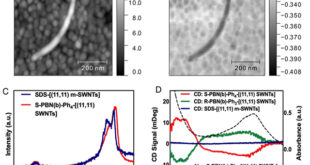Significance statement
Ni-MgTi2O5 pseudobrookites (Mg1-xNixTi2O5; x=0-1.0) were investigated in detail for the first time aiming to develop new yellow-orange ceramic pigments or dyes, under rapid (industrial-like) firing conditions. Interestingly, Ni solubility increased with firing temperature due to enhanced configurational entropy (40 and 60-70 mol% at 1200 and 1400ºC, respectively). Fired powders exhibited intense yellowish-orange colors, increasing the color intensity and chroma (red and yellow hues) with Ni doping up to x=0.4-0.5 (L*/a*/b* = 61.8/25.2/49.3 for x=0.4 at 1400ºC). Considering Ni toxicity or environmental criteria, relatively intense orange hues may be also obtained with a much lower Ni doping (L*/a*/b* = 73.0/15.7/44.1 for x= 0.1). As for its technological application, Ni-karrooite pigments were found only partially stable within the tested low temperature (1000-1050ºC) ceramic glazes; however, glazed samples developed nice yellowish colorations comparable to those obtained with Ni-rutile ceramic pigments, and therefore Ni-karrooite powders could be used as alternative yellowish ceramic dyes. Also noteworthy, the employment of an alternative aqua-based citrate-gel route, instead of the classical ceramic route, yielded to the formation of Ni-karrooite at lower temperatures (1000ºC, 20 mol% Ni) and produced finer-grained powders, although the resulting yellow-orange colors were very similar to those of the ceramic route.
Journal Reference
Journal of the European Ceramic Society,Volume 35, Issue 1, 2015, Pages 357–376. M. Llusar, , E. García, M.T. García, C. Gargori, J.A. Badenes, G. Monrós.
Departamento de Química Inorgánica y Orgánica, Universitat Jaume I, Avda. Sos Baynat s/n, 12071, Castellón, Spain.
Abstract
Solids solutions of Ni in MgTi2O5 pseudobrookite (karrooite) were investigated to develop new yellowish ceramic pigments or dyes. Ni-Karrooite samples (Mg1−xNixTi2O5) were prepared by ceramic method and through a citrate-gel metalorganic decomposition route, using rapid firing conditions (800–1500 °C). Fired pigments were characterized by XRD, SEM/EDX, UV–vis–NIR and color measurement (CIE-L*a*b*) techniques. The entropy-stabilization of MgTi2O5 with respect to ilmenite and rutile decreased with Ni doping, and Ni solid-solubility increased with temperature (40 mol% at 1200 °C, 60 mol% at 1400–1500 °C). Optical absorptions of Ni2+ in karrooite octahedral sites (mainly M1 sites) produced intense yellowish-orange colors, increasing saturation and red/yellow hues with Ni doping (up to x = 0.4–0.5). The pigments showed a limited stability within low-temperature (1000–1050 °C) ceramic glazes, although glazed samples developed intense yellowish colorations. Noteworthy, metalorganic decomposition route enabled the formation of Ni-karrooite at lower temperatures (1000 °C, 20 mol% Ni) and produced finer-grained powders, although the colors of powders and enameled samples were similar.
 Advances in Engineering Advances in Engineering features breaking research judged by Advances in Engineering advisory team to be of key importance in the Engineering field. Papers are selected from over 10,000 published each week from most peer reviewed journals.
Advances in Engineering Advances in Engineering features breaking research judged by Advances in Engineering advisory team to be of key importance in the Engineering field. Papers are selected from over 10,000 published each week from most peer reviewed journals.


